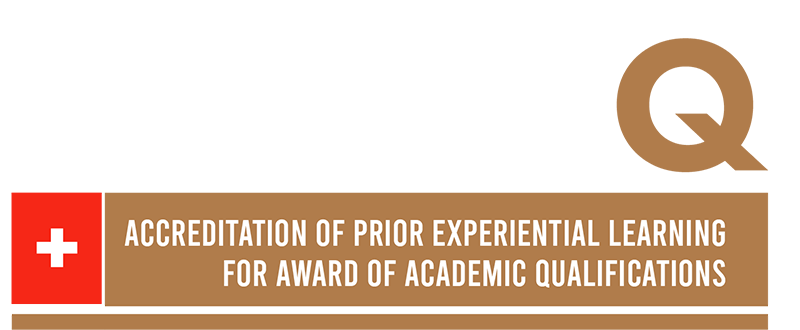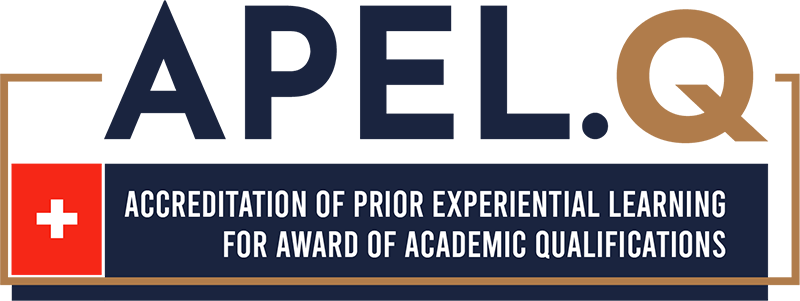The Prior Learning Assessment and Recognition (PLAR) system in Canada is a mechanism that helps individuals convert practical experience into academic credits or professional certification. PLAR is widely applied in the Canadian education system, particularly in universities, colleges, and vocational training institutions. This system supports individuals with practical experience but no formal qualifications, helping them save time and costs when pursuing formal education programs.
Meanwhile, APEL.Q (Accreditation of Prior Experiential Learning for Qualifications) from MI Swiss has similar objectives but operates within a different educational system with its unique characteristics. This article will analyze Canada’s PLAR, compare it with MI Swiss’s APEL.Q, and assess the application of both systems in higher education and professional development.
1. The PLAR (Prior Learning Assessment and Recognition) System in Canada
1.1. Overview of PLAR
PLAR is a formal process in the Canadian education system that recognizes work experience, non-formal training, or self-learning to grant academic credits or exemptions in formal programs.
▶ Reference: Government of Canada – PLAR
1.2. Objectives of PLAR
- Helps workers shorten study time and reduce costs by exempting certain subjects.
- Supports individuals with experience but no formal qualifications in achieving academic recognition.
- Facilitates skill and experience recognition for immigrants in Canada.
- Promotes lifelong learning by integrating formal education with practical experience.
1.3. How PLAR Works
The PLAR system can be applied in various fields, especially:
- Higher Education: Credit exemptions in bachelor’s and master’s programs (e.g., MBA).
- Vocational Training: Skill certification in fields like accounting, engineering, healthcare, and technology.
- Immigrant Workforce: Recognition of foreign degrees and experience.
▶ Real-World Example:
An accounting professional with over 5 years of experience but without a master’s degree can use PLAR to be exempted from certain MBA credits, reducing study time from 2 years to 1 year.
The PLAR process includes the following steps:
-
-
Application Submission
- Applicants complete an application detailing their practical experience.
- Provide supporting documents such as work contracts, projects, or company references.
-
File Evaluation
- PLAR experts compare applicants’ skills with standards from the Canadian Qualifications Framework (CQF).
-
Competency Assessment
- Applicants may be required to take a test, submit an essay, or attend an interview.
-
Comparison with Program Curriculum
- Evaluation results are compared against university or college curricula.
-
Credit or Certification Issuance
-
- If successful, applicants receive credit exemptions or skill certifications.
- If requirements are not met, additional courses may be needed.
-
-
2. Comparison of PLAR (Canada) and APEL.Q (MI Swiss)
Both PLAR (Canada) and APEL.Q (MI Swiss) aim to recognize work experience and non-formal learning for degree attainment or credit exemption, but there are some key differences.
| Criteria | PLAR (Canada) | APEL.Q (MI Swiss) |
|---|---|---|
| Governing Body | Government of Canada & Universities | MI Swiss (Swiss Information and Management Institute) |
| Target Audience | Workers with experience but without formal qualifications | Experienced workers seeking formal qualifications |
| Experience Requirement | Minimum of 3-5 years of practical experience | Minimum of 5 years of specialized experience |
| Assessment Method | Portfolio + Interview + Practical Test | Portfolio + Interview + Research Paper |
| Outcome | Awarding academic credits or professional certification | Awarding bachelor’s, postgraduate degrees, or credit exemptions |
| International Recognition | Primarily applicable in Canada and North America | Widely recognized in Switzerland, EU, UK, and Australia |
| Main Application | Supports immigrants and individuals seeking academic upgrading | Supports applicants for employment or academic progression |
3. Strengths and Limitations
3.1. Strengths of PLAR
✅ Flexibility: Allows credit exemptions without requiring full coursework.
✅ Support for immigrants: Helps foreign professionals get recognized in Canada.
✅ Focus on practical skills: Suitable for fields like accounting, engineering, and technology.
3.2. Limitations of PLAR
❌ Primarily applicable within the Canadian education system, with limited portability internationally.
❌ Does not grant formal degrees, only credit exemptions or skill certifications.
3.3. Strengths of APEL.Q
✅ Broader international recognition: Accepted across multiple global education systems.
✅ Supports academic progression: Allows credit exemptions or formal degree attainment without starting from scratch.
✅ Applicable in various fields, including business, technology, healthcare, and management.
3.4. Limitations of APEL.Q
❌ Higher experience requirement (minimum of 5 years), making it less accessible compared to PLAR.
❌ Requires completion of a research paper or project, demanding more academic skills than PLAR.
4. Conclusion
Both PLAR (Canada) and APEL.Q (MI Swiss) help individuals gain recognition for practical experience and obtain academic certification. However, there are key distinctions:
- PLAR is ideal for workers in Canada seeking credit exemptions or professional certification.
- APEL.Q is suitable for professionals seeking internationally recognized degrees or credit exemptions in higher education.
Overall, PLAR is a practical option for immigrants and workers in Canada, while APEL.Q is more suitable for those seeking internationally recognized qualifications and academic progression.
References
- Government of Canada. (2025). Prior Learning Assessment and Recognition (PLAR) Framework. Retrieved from: https://www.canada.ca/en/employment-social-development/programs/plar.html
- Canadian Information Centre for International Credentials (CICIC). (2025). Recognition of Prior Learning in the Canadian Higher Education System. Retrieved from: https://www.cicic.ca
- Canadian Qualifications Framework (CQF). (2025). Comparison of PLAR and Other Recognition Systems. Retrieved from: https://www.cqf.ca
- Council of Ministers of Education, Canada (CMEC). (2025). PLAR Guidelines for Post-Secondary Institutions in Canada. Retrieved from: https://www.cmec.ca
- Ontario Ministry of Colleges and Universities. (2025). PLAR for Post-Secondary Education and Professional Development. Retrieved from: https://www.ontario.ca/page/ministry-colleges-universities
- British Columbia Council on Admissions and Transfer (BCCAT). (2025). Assessing Prior Learning for Academic Credit: Canadian Best Practices. Retrieved from: https://www.bccat.ca
- Quebec Ministry of Higher Education. (2025). Recognition of Prior Learning and Work Experience in Quebec. Retrieved from: https://www.education.gouv.qc.ca
- European Commission. (2025). Recognition of Prior Learning in the European Higher Education Area: A Comparison with Canada. Retrieved from: https://europa.eu/europass/en/european-qualifications-framework-eqf
- OECD. (2025). Lifelong Learning and Workforce Development: The Role of PLAR and International Equivalencies. Retrieved from: https://www.oecd.org/education/lifelong-learning-plar.htm
- QAA UK (Quality Assurance Agency for Higher Education). (2025). Comparative Analysis of APEL.Q and PLAR in Global Higher Education Systems. Retrieved from: https://www.qaa.ac.uk/quality-code/assessment-of-prior-learning
- MI Swiss (Swiss Information and Management Institute). (2025). Accreditation of Prior Experiential Learning (APEL.Q) for Higher Education Qualifications. Retrieved from: https://www.miswiss.ch
- UK ENIC (UK National Recognition Information Centre). (2025). Recognition of Prior Learning: A Global Perspective Comparing PLAR and APEL.Q. Retrieved from: https://www.enic.org.uk
- International Labour Organization (ILO). (2025). How Recognition of Prior Learning Enhances Career Mobility and Economic Inclusion. Retrieved from: https://www.ilo.org/global/research/plar-and-career-mobility
- RAND Corporation. (2025). PLAR and Workforce Development: Policy Implications and Global Comparisons. Retrieved from: https://www.rand.org/research/projects/prior-learning-recognition.html
- McKinsey & Company. (2025). The Impact of Prior Learning Recognition on Career Progression and Higher Education Pathways. Retrieved from: https://www.mckinsey.com/workforce-transformation
- Harvard Business Review. (2025). How Prior Learning Assessment and Recognition (PLAR) Shapes the Future of Executive Education. Retrieved from: https://hbr.org/2025/plar-in-executive-education
- British Council. (2025). Recognition of Prior Learning in Canada and Switzerland: A Comparative Study. Retrieved from: https://www.britishcouncil.org/education
- World Bank. (2025). Recognition of Prior Learning as a Pathway to Higher Education and Employment: Case Studies from Canada and Europe. Retrieved from: https://www.worldbank.org/en/topic/skillsdevelopment
- LinkedIn Learning. (2024). The Future of Education: Integrating Prior Learning Recognition for Lifelong Learning. Retrieved from: https://learning.linkedin.com
- UNESCO Institute for Lifelong Learning. (2025). Validation of Prior Learning in the Global Education Landscape: Canada, Switzerland, and the UK. Retrieved from: https://uil.unesco.org/lifelong-learning/recognition-prior-learning
Note: The provided information is for reference purposes only.

